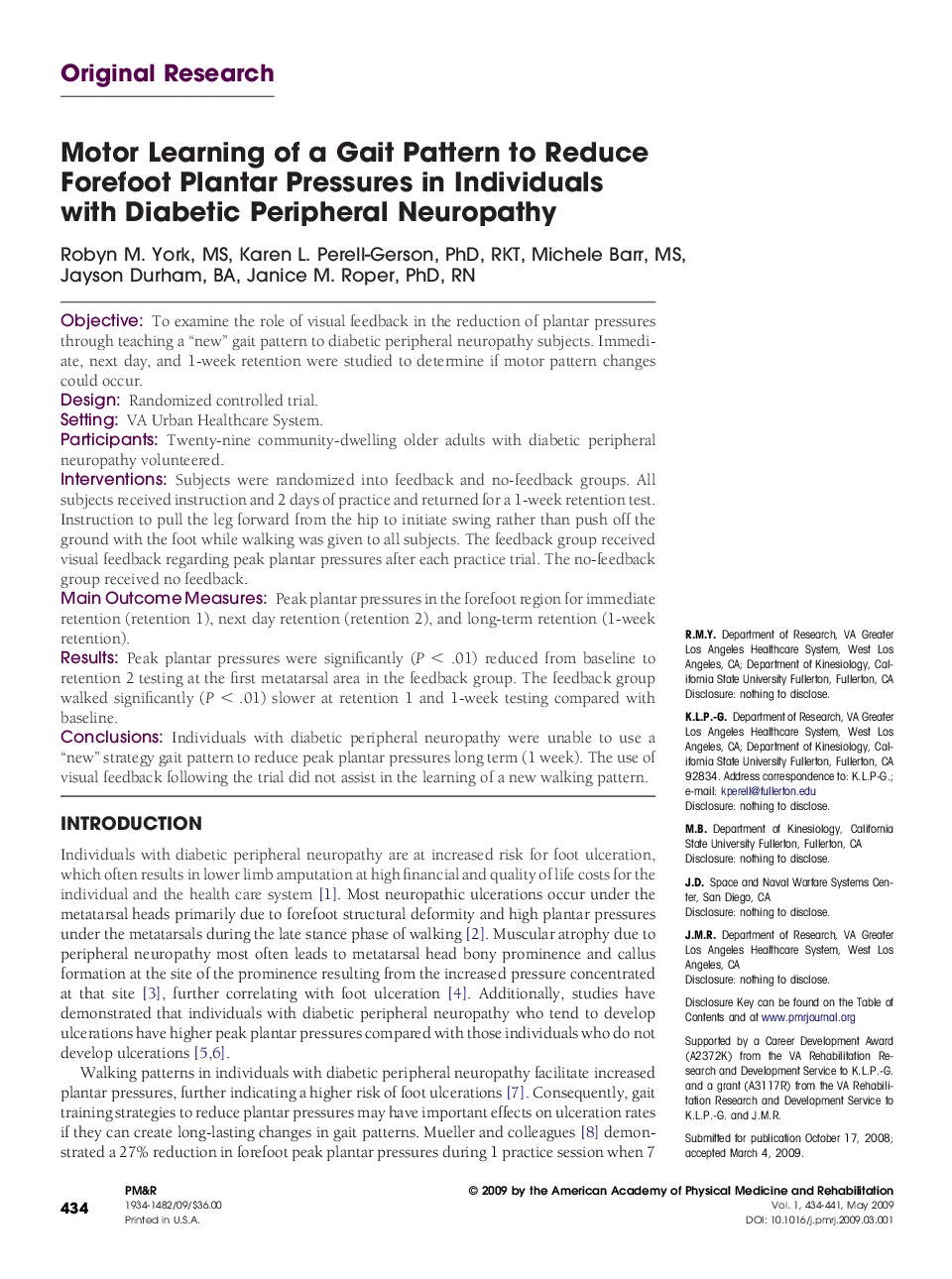| Article ID | Journal | Published Year | Pages | File Type |
|---|---|---|---|---|
| 2706976 | PM&R | 2009 | 8 Pages |
ObjectiveTo examine the role of visual feedback in the reduction of plantar pressures through teaching a “new” gait pattern to diabetic peripheral neuropathy subjects. Immediate, next day, and 1-week retention were studied to determine if motor pattern changes could occur.DesignRandomized controlled trial.SettingVA Urban Healthcare System.ParticipantsTwenty-nine community-dwelling older adults with diabetic peripheral neuropathy volunteered.InterventionsSubjects were randomized into feedback and no-feedback groups. All subjects received instruction and 2 days of practice and returned for a 1-week retention test. Instruction to pull the leg forward from the hip to initiate swing rather than push off the ground with the foot while walking was given to all subjects. The feedback group received visual feedback regarding peak plantar pressures after each practice trial. The no-feedback group received no feedback.Main Outcome MeasuresPeak plantar pressures in the forefoot region for immediate retention (retention 1), next day retention (retention 2), and long-term retention (1-week retention).ResultsPeak plantar pressures were significantly (P < .01) reduced from baseline to retention 2 testing at the first metatarsal area in the feedback group. The feedback group walked significantly (P < .01) slower at retention 1 and 1-week testing compared with baseline.ConclusionsIndividuals with diabetic peripheral neuropathy were unable to use a “new” strategy gait pattern to reduce peak plantar pressures long term (1 week). The use of visual feedback following the trial did not assist in the learning of a new walking pattern.
